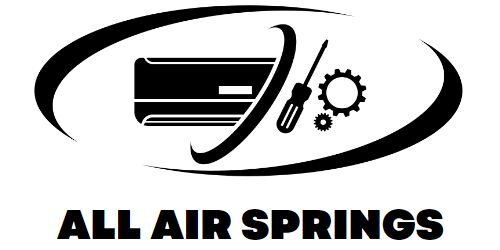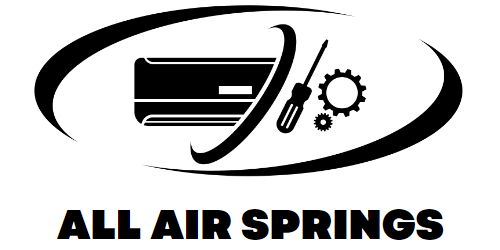Essential Guide to Heavy-Duty Truck Spare Parts: Maintenance, Quality, and Performance
What Are Heavy-Duty Truck Spare Parts?
Heavy-duty truck spare parts refer to the individual components that make up large commercial vehicles, designed to withstand the demanding conditions of long-haul transportation and heavy-duty tasks. These parts are specifically engineered for trucks that carry substantial loads, such as freight, and are built to be more durable and resilient than parts used in regular vehicles.
The main categories of heavy-duty truck spare parts include engine components, transmission systems, suspension parts, brake systems, tires, and electrical systems. Each of these parts plays a crucial role in maintaining the truck’s overall performance, safety, and fuel efficiency. For example, the engine ensures that the truck has the power to transport goods, while the brake system keeps the vehicle secure during stops.
Unlike standard passenger vehicle parts, heavy-duty truck parts are built to handle the intense wear and tear experienced by commercial trucks. This makes them larger, stronger, and often more costly to replace, but they are essential to ensure that trucks can perform at their best over long distances and heavy loads.
Understanding what constitutes these critical spare parts is vital for any truck owner or fleet manager to ensure the safe operation and longevity of their vehicles.
Importance of Using Genuine Heavy-Duty Spare Parts
When it comes to maintaining the performance and safety of heavy-duty trucks, using genuine spare parts is crucial. Genuine parts, often referred to as OEM (Original Equipment Manufacturer) parts, are specifically designed for the make and model of your truck. These parts are manufactured to meet the high standards set by the truck’s manufacturer, ensuring compatibility and optimal performance.
The primary benefit of using genuine heavy-duty truck spare parts is their reliability. OEM parts are engineered to function seamlessly with the rest of the vehicle’s systems, providing improved efficiency and longevity. These parts also come with warranties, offering peace of mind that if any issues arise, they can be addressed without additional costs.
On the other hand, using aftermarket or counterfeit parts can lead to several problems. These parts might not be manufactured to the same exact specifications, which can result in poor performance, reduced fuel efficiency, and even safety hazards. Over time, subpar parts may cause further damage to the vehicle, leading to expensive repairs.
In addition to performance, genuine parts are designed to maintain the truck’s resale value. By using OEM parts, you can ensure that your vehicle stays in top condition, which can be beneficial if you plan to sell or trade it in the future. Therefore, investing in genuine spare parts not only enhances the truck’s functionality but also protects your investment.
Common Types of Heavy-Duty Truck Spare Parts
Heavy-duty trucks are complex machines made up of various parts that work together to ensure smooth operation. The most common types of spare parts needed for these trucks are critical to maintaining performance, safety, and efficiency. Here are some of the essential heavy-duty truck spare parts:
1.
Engine Components
The engine is the heart of a heavy-duty truck, providing the power necessary to move heavy loads. Common engine components that may need replacement include pistons, valves, crankshafts, and fuel injectors. These parts wear out over time due to the high stress and heat generated during operation.
2. Transmission Parts
The transmission system transfers power from the engine to the wheels. Key parts of the transmission include the clutch, gears, and torque converter. If the transmission is not functioning correctly, the truck may have difficulty shifting gears or experience power loss, affecting driving performance.
3. Brake System
Brakes are essential for safety, and their components include brake pads, brake drums, rotors, and brake lines. Regular replacement of brake system parts ensures that the truck can stop safely under heavy loads or when traveling at high speeds.
4. Suspension Parts
The suspension system helps to maintain the vehicle’s stability and comfort by absorbing shocks. Common parts that may need replacement include shock absorbers, leaf springs, and bushings. Worn suspension parts can affect handling and cause excessive wear on other components like tires.
5. Tires
Heavy-duty trucks rely on durable tires to support the weight of the vehicle and cargo. Tire types vary based on truck applications, including all-terrain, highway, and off-road tires. Tire replacement is crucial for maintaining traction, fuel efficiency, and overall vehicle stability.
6. Electrical Components
Electrical systems in heavy-duty trucks include the battery, alternator, starter motor, and lighting. Ensuring these parts are in good condition is vital for reliable engine starting, lighting, and electronic systems.
Each of these parts is essential for keeping the truck in optimal condition, and addressing wear and tear promptly can prevent more significant issues down the road.
Signs Your Truck Needs Spare Parts Replacement
Recognizing when your heavy-duty truck needs spare parts replacement is crucial for preventing breakdowns and maintaining its performance. Certain signs indicate that specific components are wearing out and need attention. Here are common warning signals to look for:
1.
Unusual Noises
Unexplained sounds, such as squealing, grinding, or knocking, can indicate issues with engine components, brakes, or suspension parts. For example, squeaky brakes could signal worn brake pads, while a knocking sound from the engine might indicate internal damage. These noises should not be ignored, as they often point to parts that need immediate attention.
2. Reduced Performance
If your truck is struggling to maintain speed or accelerate smoothly, it may be due to issues with the engine, fuel system, or transmission. A noticeable decrease in power or sluggishness could suggest that parts like the fuel injectors, air filters, or transmission gears need to be replaced.
3. Vibration or Pulling to One Side
Excessive vibration or the truck pulling to one side while driving could indicate problems with the suspension, tires, or alignment. Worn shock absorbers, misaligned wheels, or uneven tire wear can all contribute to these symptoms, which compromise handling and safety.
4. Warning Lights
Modern heavy-duty trucks are equipped with onboard diagnostics that alert you to problems through warning lights on the dashboard. If you see a check engine light, brake warning light, or any other alert, it’s essential to diagnose the issue promptly. These warning lights often indicate that specific components need attention or replacement.
5. Leaks
Any visible fluid leaks under the truck, whether from the engine, transmission, or brakes, should be investigated. Leaking oil, coolant, brake fluid, or transmission fluid can signal worn seals, gaskets, or hoses that need to be replaced to prevent further damage.
6. Excessive Exhaust Smoke
Heavy-duty trucks typically produce exhaust fumes, but thick black or blue smoke can indicate problems with the engine or fuel system. This could mean that components like fuel injectors or the exhaust system need replacement to maintain proper engine function.
Recognizing these signs early and addressing them promptly can prevent costly repairs and improve the safety and efficiency of your truck. Regular inspections are key to identifying potential issues before they become major problems.
How to Find the Right Spare Parts for Your Heavy-Duty Truck
Finding the right spare parts for your heavy-duty truck is essential to ensuring that it continues to perform at its best. Here are some key tips to help you identify the correct parts for your truck:
1.
Know Your Truck’s Make, Model, and Year
The first step in finding the right spare parts is to know your truck’s specifications. Always refer to the vehicle’s manual for the exact make, model, and year of your truck. These details are crucial for identifying compatible parts, as different truck models may require different sizes or configurations of components.
2. Consult with Professionals
When in doubt, consult with professionals who specialize in heavy-duty trucks. Mechanics and service technicians can help you identify which parts are needed and ensure that they meet the manufacturer’s standards. They can also assist in ordering the right parts from reputable suppliers or dealers.
3. Use Trusted Suppliers and Dealers
To ensure quality and compatibility, purchase spare parts from authorized dealers or well-established suppliers. Trusted suppliers carry OEM (Original Equipment Manufacturer) parts that are designed to fit your truck’s specific make and model. Avoid purchasing from unreliable sources, as counterfeit parts may lead to performance issues or safety concerns.
4. Utilize Online Resources
In today’s digital age, many online platforms offer parts catalogs and tools to help you search for the right spare parts. Websites of reputable parts suppliers and manufacturers often allow you to filter parts by vehicle make and model, streamlining the process of finding compatible components.
5. Check for Warranty and Certifications
When purchasing spare parts, check whether they come with a warranty or certification. Genuine parts from reputable manufacturers typically come with warranties that protect against defects and ensure the part meets high standards. This adds peace of mind and helps prevent costly mistakes.
By following these steps, you can be confident that you’re selecting the right parts that will keep your truck operating smoothly and safely. Whether you’re replacing engine components, brakes, or suspension parts, taking the time to source quality replacements will ultimately save you money and improve vehicle reliability.
Benefits of Regular Maintenance and Spare Parts Replacement
Regular maintenance and timely spare parts replacement are key to ensuring the longevity and optimal performance of heavy-duty trucks. Proactive care not only prevents unexpected breakdowns but also saves money in the long run. Here are the key benefits of keeping up with maintenance and replacing parts when needed:
1.
Prevents Major Breakdowns
Regular maintenance allows for early identification of worn or damaged parts, which can prevent more significant failures in the future. By replacing parts like brake pads, filters, or belts before they fail completely, you reduce the risk of sudden breakdowns that could lead to costly repairs or downtime. This proactive approach helps keep your truck on the road and minimizes disruptions to your operations.
2. Enhances Safety
Heavy-duty trucks face significant stress due to the weight they carry and the long distances they travel. Routine maintenance and spare parts replacement ensure that critical safety components, such as brakes, suspension, and tires, are in good condition. This is essential for preventing accidents and ensuring the safety of the driver and other road users.
3. Improves Fuel Efficiency
Worn-out components like air filters, fuel injectors, and tires can negatively impact your truck’s fuel efficiency. Regularly replacing these parts helps optimize engine performance, reducing fuel consumption and lowering operating costs. This contributes to better overall efficiency, especially for fleets managing multiple trucks.
4. Extends Vehicle Lifespan
By addressing minor issues early and replacing parts as needed, you can significantly extend the lifespan of your heavy-duty truck. Regular maintenance helps maintain the vehicle’s overall health, ensuring that it operates smoothly for many years, which is crucial for fleet owners and truck operators who rely on their vehicles for business.
5. Reduces Long-Term Costs
Although regular maintenance and spare parts replacement require an upfront investment, they can help you save money in the long run by preventing more costly repairs and replacements. Keeping your truck in top condition can reduce the need for major repairs and increase its resale value when it’s time to upgrade.
Maintaining your truck through regular checks and replacing parts as they wear out is a smart investment that pays off in reliability, safety, and cost savings.
How to Ensure Quality and Durability in Spare Parts
Ensuring that you use high-quality, durable spare parts for your heavy-duty truck is crucial to maintaining optimal performance and preventing costly repairs. Here are some essential tips for ensuring the quality and durability of the spare parts you choose:
1.
Buy from Reputable Suppliers
One of the most important factors in ensuring part quality is purchasing from trusted, well-established suppliers. Reputable suppliers offer OEM (Original Equipment Manufacturer) parts or certified aftermarket parts that meet stringent quality standards. When buying from reliable sources, you can be confident that the parts are designed specifically for your truck, ensuring durability and performance.
2. Check for Warranties and Guarantees
Always verify whether the parts come with a warranty or guarantee. Genuine parts from reputable brands often come with warranties that protect you in case of manufacturing defects. A warranty ensures peace of mind, knowing that the parts are covered if they fail prematurely. Avoid purchasing parts without warranties, as they may not be as durable or reliable.
3. Examine Certifications and Standards
High-quality spare parts should meet specific industry certifications and standards, such as ISO (International Organization for Standardization) or other regulatory approvals. These certifications ensure that the parts have been rigorously tested for quality, safety, and durability. Be sure to look for these certifications on packaging or product details when purchasing parts.
4. Consider Brand Reputation
Brand reputation plays a significant role in the quality and longevity of heavy-duty truck spare parts. Well-known brands with a proven track record in the industry tend to manufacture parts that are more reliable and durable. Before making a purchase, do some research to find out which brands are trusted by truck owners and fleet operators.
5. Inspect Parts Before Installation
If possible, inspect parts before installation to check for signs of damage or poor craftsmanship. Look for any irregularities, such as cracks, rust, or excessive wear. Even new parts can sometimes have manufacturing defects, so it’s essential to ensure they meet quality standards before they are installed.
By following these steps, you can ensure that the spare parts you choose will perform well, last longer, and contribute to the overall health of your truck. Prioritizing quality and durability reduces the risk of premature failures and helps maintain the truck’s operational efficiency.
Conclusion: Investing in the Right Spare Parts
Investing in the right spare parts for your heavy-duty truck is essential for maintaining its performance, safety, and longevity. While it may seem tempting to cut corners by using cheaper or non-OEM parts, the long-term benefits of using genuine, high-quality components far outweigh the initial savings. Proper maintenance and timely spare parts replacement ensure that your truck operates smoothly, reducing the risk of breakdowns and expensive repairs.
By choosing the right parts, such as OEM components, you’re ensuring optimal compatibility, durability, and performance. Regular inspections and addressing issues early can prevent major failures, enhance safety, and improve fuel efficiency. Additionally, genuine parts contribute to the truck’s resale value and overall longevity, allowing your vehicle to serve you well for many years.
Ultimately, investing in quality spare parts is an investment in the future of your truck. Whether you are an owner-operator or manage a fleet of trucks, ensuring that your vehicles are equipped with reliable and durable parts will keep your business running smoothly, efficiently, and safely. When in doubt, always consult with professionals to make informed decisions about the parts that best suit your truck’s needs.
For detailed information, you can contact us at torqueusa.com


